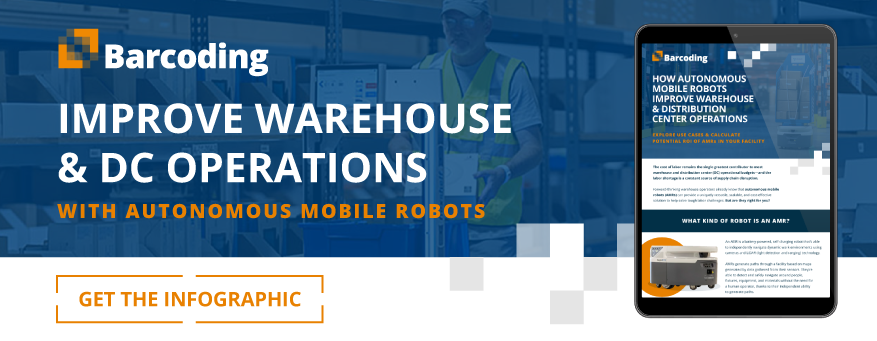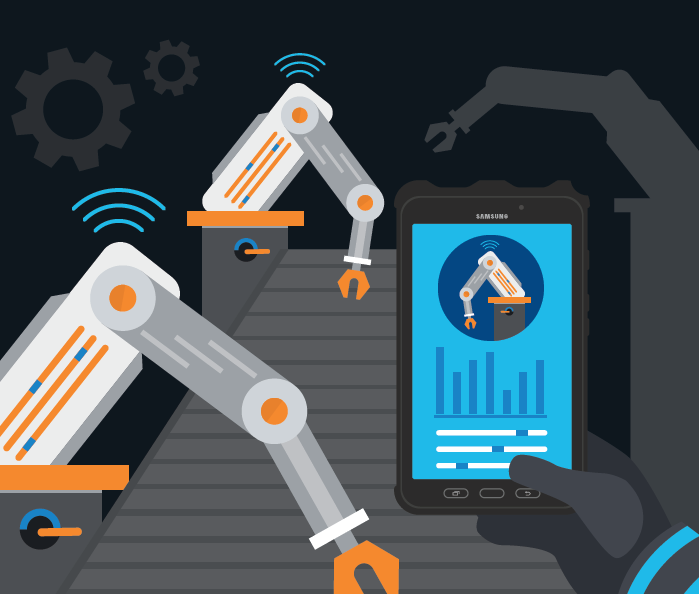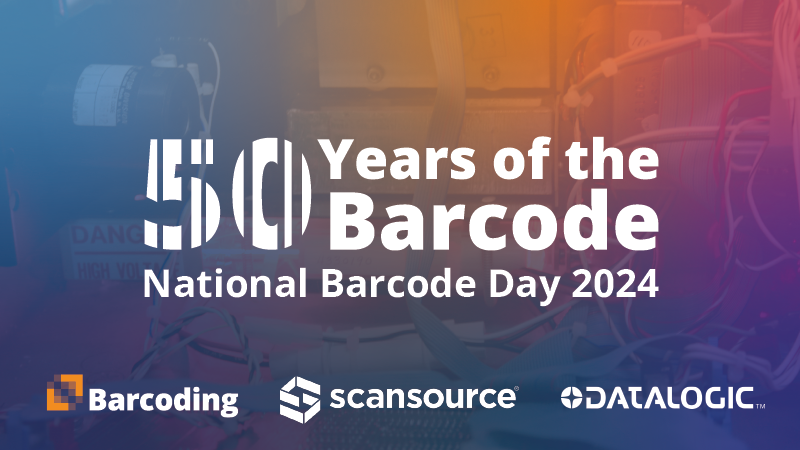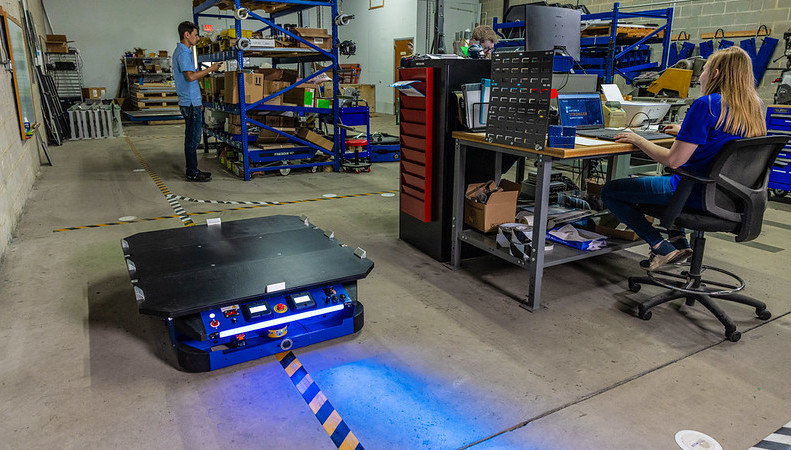Technology serves as the linchpin for continuous improvement and the ongoing evolution of smarter manufacturing. By implementing intelligent technologies, companies are moving from traditional manufacturing practices toward becoming data-driven organizations.
What’s it take to be smart? The gold standard for Industry 4.0, typically seen in the most digitally mature organizations, runs on an automated, physical-digital-physical loop. It takes advantage of Industrial Internet of Things (IIoT)-embedded machines and uses cloud computing and machine learning to keep production running without disruption.
A truly smart factory is aspirational for most operations and requires a digital transformation nurtured by a committed C-suite. The rewards for this transformation can be measured in improvements in outputs, resource utilization, product quality, and labor productivity.
Among the most impactful innovations, these six areas present huge potential to revolutionize manufacturing:
- Barcoding and RFID
- Mobility and Fixed Scanning
- Sensors and IoT Equipment and Devices
- Machine Vision
- Cloud Computing and Data Analytics
- Robotics and Industrial Automation
On their own, each advancement can help address labor shortages, enhance employee experience, spur efficiency, drive innovation, improve product quality, and keep costs under control. But by seamlessly integrating multiple technologies, today’s manufacturers can go from merely “smart” to truly intelligent and ready for what comes next.
Impacts of Smart Manufacturing Technologies: Key Findings
A few years ago, experts predicted manufacturers would see revenues and profit margins increase as they implemented smart factory technologies. So, are the predictions panning out? According to more recent industry reports, manufacturing modernization is delivering significant benefits, in some cases across the entire value chain.
Companies implementing smart factory technologies report 10–12% gains in manufacturing output, factory utilization, and labor productivity after making the investments. Safety, sustainability, and more widespread innovation improvements further enhance these gains.1
Another report found that intelligent manufacturing can facilitate improved defect detection by as much as 50%, and yield improvement by 20%. It also found that intelligent automation has already increased revenues by almost 8%.2 The report points out the importance of data analytics, machine learning, and Internet of Things (IoT) in enabling intelligent manufacturing.
Finally, companies at the front of the pack are discovering ways to capture benefits across the entire manufacturing value chain by harnessing the power of connectivity, intelligence, human-machine collaboration, and advanced robotics. They’re seeing increased production capacity and reduced material losses, improving customer service and delivery lead times, enhancing employee experience, and reducing environmental impacts.3
Smart manufacturing isn’t some futuristic concept; it’s today’s reality, and it’s transforming the manufacturing industry. Manufacturers that adopt these advancements can gain a competitive edge and create greater value for customers, partners, and employees.
1. Barcoding and Radio Frequency Identification (RAIN RFID)
Barcoding and RAIN RFID are the bedrock of modern inventory management. Barcode labels provide a visual, machine-readable representation of data, and scanners make inventory management faster, easier, and significantly more accurate.
RFID uses radio waves to enable devices to automatically identify and track tags and labels affixed to materials, products, and assets for virtually error-free, real-time tracking and tracing of items throughout facilities and the broader supply chain. This results in quicker order fulfillment, streamlined supply chains, and lower operational costs.
2. Mobility and Fixed Scanning
Mobile devices can scan barcodes, RFID tags, and other identifiers, and have revolutionized data capture by putting powerful, connected capabilities directly into workers’ hands. Mobility banished the clipboard and brought a new level of speed, efficiency, and real-time data access to the production floor.
Fixed scanners interact with the same types of identifiers in strategic locations throughout a facility—for example, a fixed overhead scanner can read barcode labels in a product that’s presented manually or as it passes by the scanner on a conveyor.
3. Integrated Sensors and IoT-Connected Devices
The integration of sensors and IoT devices into manufacturing equipment changes the data capture game. These technologies offer unprecedented visibility into production processes. They enable more effective predictive maintenance, reduce downtime, and improve product quality. IoT devices can also monitor environmental conditions, ensuring optimal equipment performance, and inventory expiration management, among other benefits.
4. Machine Vision
Machine vision uses cameras and computer processing to perform quality inspections. It can identify product defects, inspect labels, measure parts, and guide robots with a degree of accuracy that far surpasses human capabilities. It can enhance product quality, reduce waste, and help manufacturers meet stringent quality control standards.
5. Cloud Computing and Data Analytics
Cloud computing and data analytics are the engines that power the rest of these technologies. Using cloud computing, manufacturers can store and analyze vast amounts of data generated by multiple data capture technologies across a process, a facility, or an entire enterprise, leading to insights that optimize processes and inform better decision-making. Companies use data analytics to identify trends, make more accurate predictions, and drive continuous improvement.
6. Industrial Automation and Robotics
Robotics and industrial automation weren’t developed specifically to address the ongoing labor shortage, but businesses that use robotics and physical automation are able to strategically redeploy human workers to jobs where human skills add value. Robots can perform repetitive, labor-intensive tasks. This shift not only improves efficiency and product consistency but also promotes a safer, more satisfying work environment for the people who come to work.
Within the realm of physical automation, autonomous mobile robots (AMRs) are unique in their ability to safely, accurately, and autonomously navigate a production environment alongside human workers. AMRs can transport materials and items within a facility to reduce human workloads and minimize the risk of accident or injury. By taking over some of the most tedious tasks, AMRs allow human workers to focus on more complex, engaging roles. Plus, AMRs can operate around the clock.
It’s Never Too Early to Modernize
The choice to modernize technology isn’t a trend or a nice-to-have; it's increasingly a necessity to stay competitive. But when you work with an integration expert to identify and implement the right technologies, you can achieve greater efficiency and accuracy while also making work safer and more rewarding for your teams. Find out how simple and straightforward it can be to introduce AMRs into your production processes. Just click here or below to get our free infographic—plus a checklist for getting your workplace AMR-ready.
SOURCES
1 Deloitte, Benefits of smart factories.
2 IBM Institute for Business Value, Smart manufacturing.
3 McKinsey, Capturing the true value of Industry 4.0.







